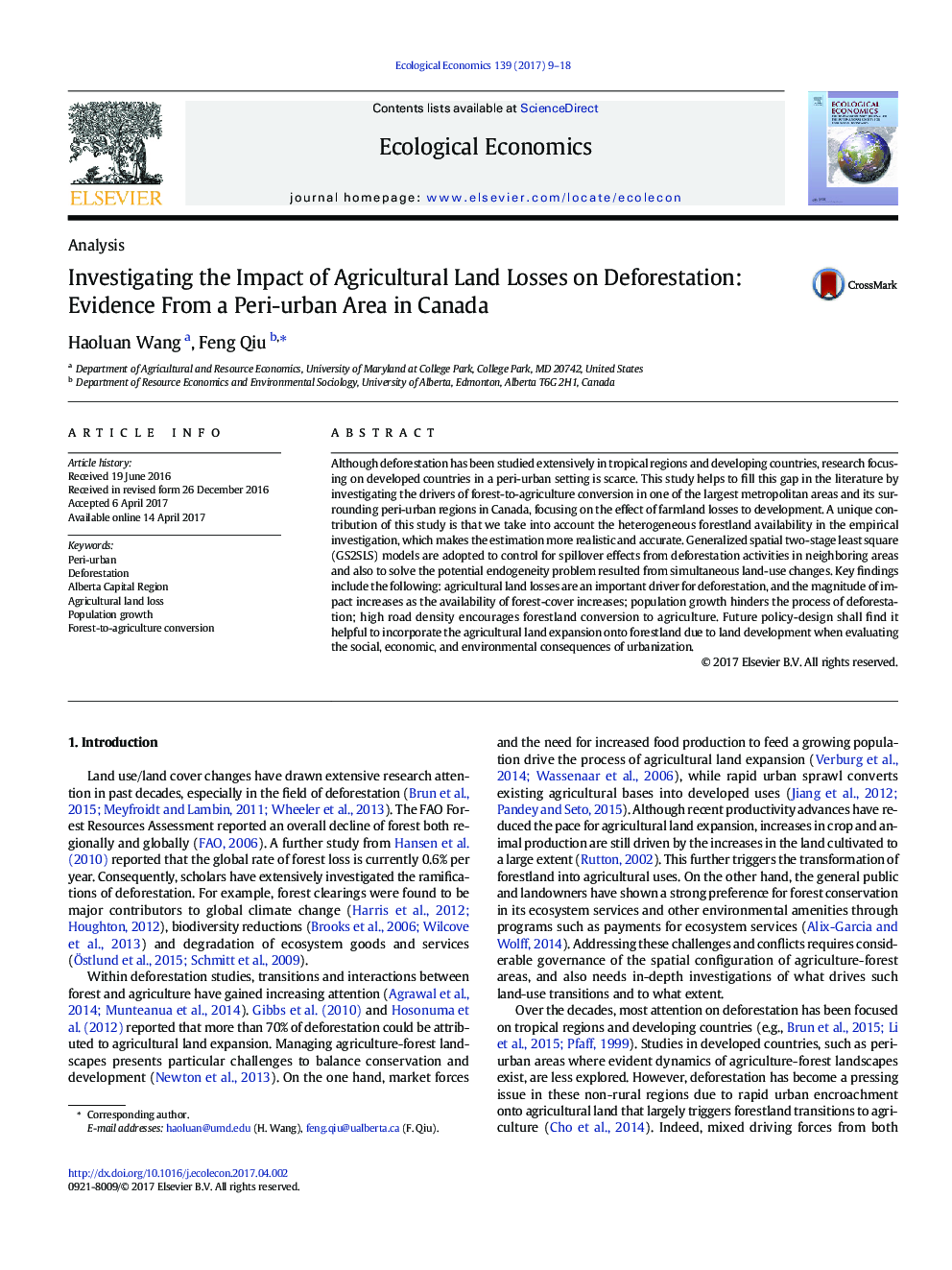| Article ID | Journal | Published Year | Pages | File Type |
|---|---|---|---|---|
| 5048798 | Ecological Economics | 2017 | 10 Pages |
Although deforestation has been studied extensively in tropical regions and developing countries, research focusing on developed countries in a peri-urban setting is scarce. This study helps to fill this gap in the literature by investigating the drivers of forest-to-agriculture conversion in one of the largest metropolitan areas and its surrounding peri-urban regions in Canada, focusing on the effect of farmland losses to development. A unique contribution of this study is that we take into account the heterogeneous forestland availability in the empirical investigation, which makes the estimation more realistic and accurate. Generalized spatial two-stage least square (GS2SLS) models are adopted to control for spillover effects from deforestation activities in neighboring areas and also to solve the potential endogeneity problem resulted from simultaneous land-use changes. Key findings include the following: agricultural land losses are an important driver for deforestation, and the magnitude of impact increases as the availability of forest-cover increases; population growth hinders the process of deforestation; high road density encourages forestland conversion to agriculture. Future policy-design shall find it helpful to incorporate the agricultural land expansion onto forestland due to land development when evaluating the social, economic, and environmental consequences of urbanization.
